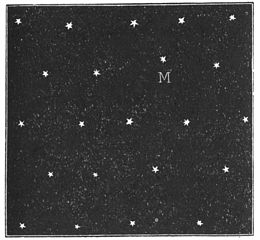Copernican principle
| Part of a series on |
| Physical cosmology |
|---|
Are cosmological observations made from Earth representative of observations from the average position in the universe?

In physical cosmology, the Copernican principle states that humans, on the Earth or in the Solar System, are not privileged observers of the universe,[1] that observations from the Earth are representative of observations from the average position in the universe. Named for Copernican heliocentrism, it is a working assumption that arises from a modified cosmological extension of Copernicus' argument of a moving Earth.[2]
Origin and implications
While the Copernican principle is derived from the negation of past assumptions, such as
Most modern cosmology is based on the assumption that the cosmological principle is almost, but not exactly, true on the largest scales. The Copernican principle represents the irreducible philosophical assumption needed to justify this, when combined with the observations. If one assumes the Copernican principle and observes that the universe appears isotropic or the same in all directions from the vantage point of Earth, then one can infer that the universe is generally homogeneous or the same everywhere (at any given time) and is also isotropic about any given point. These two conditions make up the cosmological principle.[7]
In practice, astronomers observe that the universe has
On scales comparable to the radius of the observable universe, we see systematic changes with distance from Earth. For instance, at greater distances, galaxies contain more young stars and are less clustered, and
Bondi and
Since the 1990s the term has been used (interchangeably with "the Copernicus method") for J. Richard Gott's Bayesian-inference-based prediction of duration of ongoing events, a generalized version of the Doomsday argument.[clarification needed]
Tests of the principle
The Copernican principle has never been proven, and in the most general sense cannot be proven, but it is implicit in many modern theories of physics. Cosmological models are often derived with reference to the cosmological principle, slightly more general than the Copernican principle, and many tests of these models can be considered tests of the Copernican principle.[17]
Historical
Before the term Copernican principle was even coined, past assumptions, such as
Modern tests
Recent and planned tests relevant to the cosmological and Copernican principles include:
- time drift of cosmological redshifts;[18]
- modelling the local gravitational potential using reflection of cosmic microwave background (CMB) photons;[19]
- the supernovae;[20]
- the kinetic Sunyaev–Zeldovich effect in relation to dark energy;[21]
- cosmic neutrino background;[22]
- the integrated Sachs–Wolfe effect[23]
- testing the isotropy and homogeneity of the CMB;[24][25][26][27][28]
- Some authors claim that the KBC Void violates the cosmological principle and thus the Copernican principle.[29] However, other authors claim that the KBC void is consistent with the cosmological principle and the Copernican principle.[30]
Physics without the principle
The standard model of cosmology, the Lambda-CDM model, assumes the Copernican principle and the more general cosmological principle. Some cosmologists and theoretical physicists have created models without the cosmological or Copernican principles to constrain the values of observational results, to address specific known issues in the Lambda-CDM model, and to propose tests to distinguish between current models and other possible models.
A prominent example in this context is
While the
See also
- Absolute time and space
- Anthropic principle
- Axis of evil (cosmology)
- Hubble Bubble (astronomy)
- Mediocrity principle
- Particle chauvinism
- P symmetry
- Rare Earth hypothesis
- The Principle (2014 film)
- Cosmological principle
References
- ISBN 978-0-521-42270-3.
- ^ Bondi, Hermann (1952). Cosmology. Cambridge University Press. p. 13.
- ISBN 978-0-674-17103-9.
- .
- .
- ^ Sagan, Carl, Cosmos (1980) p. 193
- ^ ISBN 978-0-19-851884-6.
- S2CID 118603499.
- ^ Billings, Lee (April 15, 2020). "Do We Live in a Lopsided Universe?". Scientific American. Retrieved March 24, 2022.
- S2CID 215238834. Retrieved 24 March 2022.
- S2CID 222066749.
- S2CID 54958680. Retrieved March 24, 2022.
- S2CID 9654355.
- arXiv:1311.1104 [astro-ph.CO].
- ^ "Line of galaxies is so big it breaks our understanding of the universe".
- .
- S2CID 32735465.
- S2CID 31455609.
- S2CID 5468549.
- S2CID 17421918.
- PMID 22084299.
- S2CID 14320348.
- S2CID 118478786.
- S2CID 119278505.
- S2CID 118580902.
- S2CID 13823900.
- S2CID 13037411.
- arXiv:astro-ph/0703325.
- ISSN 0035-8711.
- S2CID 119286482.
- S2CID 118518082.
